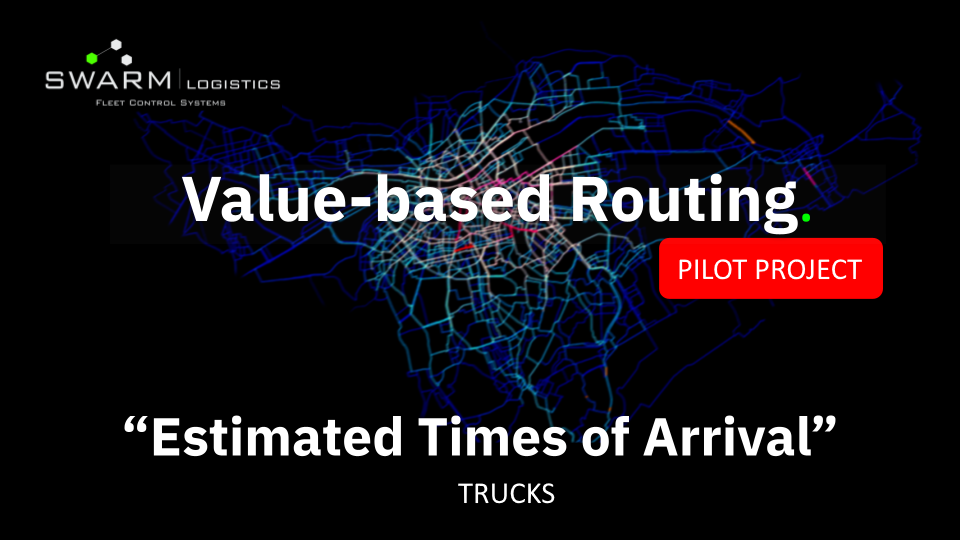
40 heavy trucks in road freight transport with approx. 6500 routes from February 1st to 29th, 2024
April 2024
Areacontrol GmbH and Swarm Logistics GmbH carried out a joint pilot project. The aim of the pilot project was to test how precise the LUT 4.8 machine learning model developed by Swarm Logistics is for estimating arrival times or Estimated Times of Arrival (ETA) for heavy trucks in road freight transport, without having any information about the current traffic situation, i.e. without live traffic information and without the model being trained on the specific geolocations. To do this, data from 40 trucks (40t) with different drivers were analyzed over a period of 1 month (February 1-29, 2024) and 6826 routes.
Initial situation::
- 40 trucks (40t) with different drivers and 6826 routes
- Geolocation primarily Northern Germany with regions that have not yet been processed in LUT 4.X.
- Dates were in the past and the estimated time period i.e. Feb 24 was not used for training the model LUT 4.X.
- Mixed traffic (from 10km to over 300km routes, a few minutes to 4 hours travel time)
- Running engine (e.g. leave the heater running, or let the engine cool down) without driving distance was sometimes recorded as driving time.
- A different route was taken than planned by Swarm Logistics.
- If the vehicle is stationary for a longer period of time and the GNSS conditions are poor, the tracked geolocation changes, which can falsify the travel time.
Methodology and cleaning of data:
Historical routes were re-planned. Deviations in percent were calculated from the results.
Group 1: Arithmetic means
Group 2: Weighted Means (Weighted Based on Travel Distance)
Each with the addition of absolute deviations.
In order to isolate the aforementioned problems, data was cleaned. The interim results are also listed.
A. Results with more than 10% route deviation were excluded (different route guidance)
B. Distances less than 2km were excluded (GNSS jumps, rounding deviations)
C. Deviations of more than 50% were excluded (short distances with GNSS jumping and engine running)
Results:
| 11,16 % | cleaned around case A |
| 7,14 % | plus cleaned up for case B |
| 1,08 % | plus cleaned up for case C |
| 10,86 % | cleaned data with absolute deviations | |
| 2,44 % | cleaned data with relative deviations | |
| 15,58 % | Raw data with absolute deviations (not cleaned) | |
| 2,07 % | Raw data with relative deviations |
Interpretation:
The pilot project can be considered a complete success and it was validated that the Swarm Logistics’ Machine Learning Model LUT 4.8 can predict travel times for trucks with a high level of precision, without knowing the current traffic situation and without having to be trained on specific geolocations.
We can assume an estimated deviation of between approx. 2-10% of the travel time.
In addition to the vehicles, the drivers also had a major influence, as their driving styles vary greatly.
In principle, the baseline model is also suitable to be trained further “on the edge” with driver profiles, thus achieving increasingly better predictions for certain drivers over time. Initial tests have also confirmed the result for cross-border routes.
We would like to thank our partner and first adopter Arealcontrol for their support and for the high data quality.
If you are interested in more details, please feel free to contact us.
You are welcome to test route planning yourself at swarmrouting.de.
The machine learning model LUT 4.8 is now available in our products and model LUT 5 is in preparation and will be trained on over 35 times more data points.
